#modern and 21st century architecture
Text


Who Came First? The Man or the Sperm.
#modern and 21 century art and photography#modern and 21st century architecture#who came first? the man or the sperm.
15 notes
·
View notes
Text
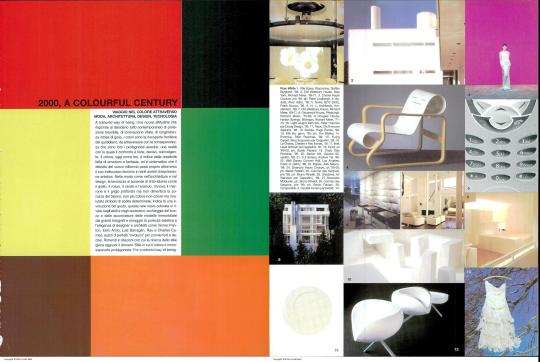
The 21st Century via the Vogue Italia archive, 2000
Viaggio nel colore attraverso - Moda, architettura, design, tecnologia.
#vogue italia#vogue#vogue archive#21st century#2000#y2k#moda#architettura#design#tecnologia#2000s fashion#modern architecture#2000s design#y2k design#my posts#nokia#villa spies#old westbury house#richard meier#chanel haute couture#nokia 8210#douglas house#eames#alexander mcqueen#comme des garcons#givenchy#frank gehry#walt disney concert hall
5 notes
·
View notes
Text
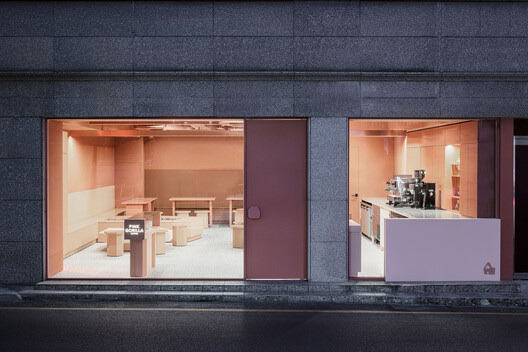
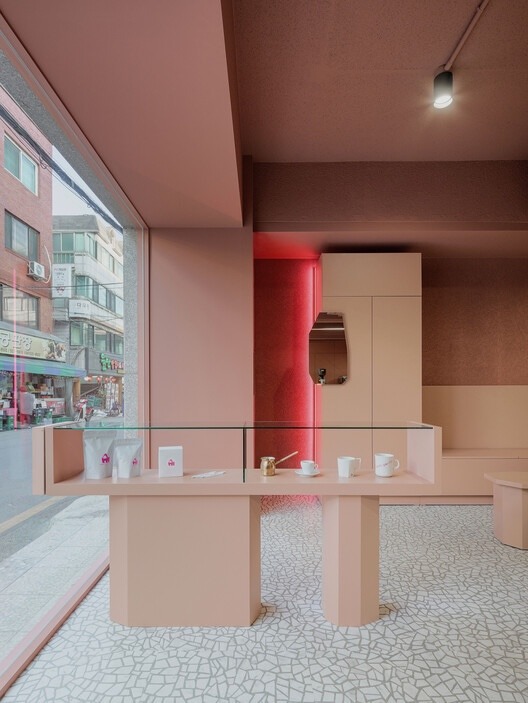


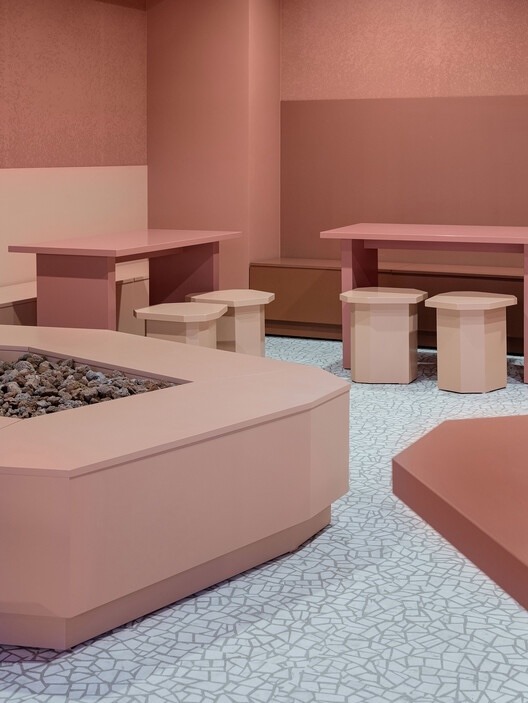
2 notes
·
View notes
Text
Part 2 of Stella Star at Ivanhoe
Here is part 2 of my adventure at Ivanhoe Motel in beautiful North Wildwood!
View Part 1
This is part 2 of a two-part series. These photos were taken on March 23rd, 1967. (…Or, was that 2023?)
One unique thing about Ivanhoe is its bronze sculpture art by the pool and on the west side second-story patio.
The first day of spring was only days ago. It’s not pool weather yet,so it’s kept under cover for now.
Like so many other photo sets of mine, you can see me here…

View On WordPress
#1960#1960s#21st#21st St#21st Street#Brady Bunch#Brady Residence#Groove#Ivanhoe#Ivanhoe Motel#jersey shore#Mid-Century Modern Architecture#mod#North Wildwood#Stella Star#The Brady Bunch#wildwood#wildwood nj
0 notes
Link
Here are the 20 architects furniture designs designed by the architects and the purpose of designing them: 1. The Barcelona Chairs | Furniture Design Designer: Mies van der Rohe and Lilly Reich Year: 1929 Materials: Chrome on steel frame Leather cushions filled with foam Style: Modernist Dimension: Height 75 cm Width 75 cm Depth 75 cm Purpose: for the German Pavilion at the International Exposition of 1929, hosted by Barcelona, Catalonia, Spain.
#famous furniture designers 21st century#furniture by architects book#famous furniture designers and their work#furniture design classics#modern architecture furniture#famous modern furniture designers#famous furniture brands#architecture furniture symbols
0 notes
Text
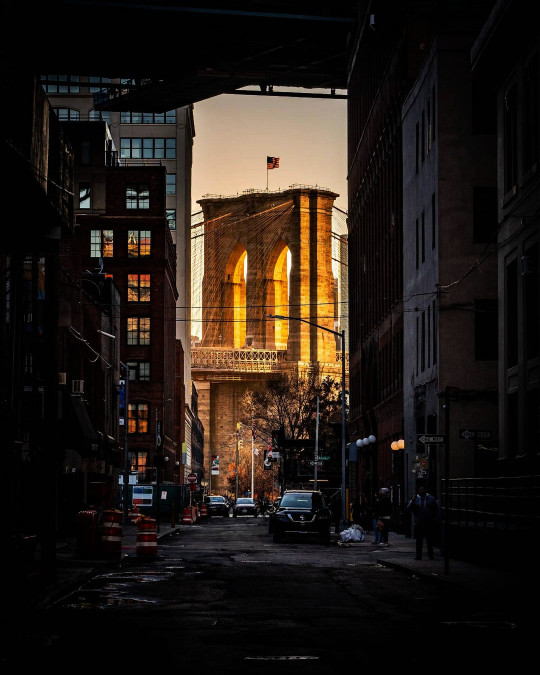
Has the Brooklyn Bridge ever undergone significant renovations?
The Brooklyn Bridge, an iconic symbol of New York City, stands as a testament to engineering brilliance and architectural marvel. Since its completion in 1883, the bridge has played a crucial role in connecting the boroughs of Manhattan and Brooklyn, witnessing the evolution of the cityscape over the decades. In its long and storied history, the Brooklyn Bridge has indeed undergone significant renovations to ensure its structural integrity and adapt to the changing needs of a bustling metropolis.
Initial Construction:
Designed by renowned engineer John A. Roebling and completed by his son Washington Roebling, the Brooklyn Bridge was a groundbreaking feat of engineering in its time. However, even with its sturdy construction, the bridge needed to adapt to the increasing demands of a rapidly growing city.
Early Renovations:
In the early 20th century, several renovations were undertaken to enhance the bridge's stability and accommodate the ever-increasing vehicular and pedestrian traffic. The original wooden walkway was replaced with a more durable concrete surface, and the bridge's cables and support structures were reinforced to meet modern safety standards.
Mid-20th Century Upgrades:
As the mid-20th century dawned, the Brooklyn Bridge faced another wave of renovations. The emergence of automobiles as a dominant mode of transportation prompted the need for wider lanes and reinforced roadways. The bridge's signature Gothic towers underwent meticulous restoration to preserve their historic charm while ensuring they could withstand the test of time.
1980s Rehabilitation:
In the 1980s, the Brooklyn Bridge underwent a comprehensive rehabilitation project to address the effects of wear and tear from decades of heavy use and exposure to the elements. The project included the replacement of deteriorating stones, repainting of the bridge's steel components, and the installation of modern lighting to enhance visibility and safety.
Post-9/11 Precautions:
In the aftermath of the tragic events of September 11, 2001, the Brooklyn Bridge, like many other landmarks, became a focus of heightened security measures. The city implemented additional safety features, including surveillance systems and increased police presence, to safeguard this critical piece of infrastructure.
Contemporary Maintenance:
Even in the 21st century, ongoing maintenance is crucial to preserving the Brooklyn Bridge for future generations. Regular inspections, repairs, and technological upgrades ensure that the bridge continues to serve as a vital transportation link while retaining its iconic status.
Conclusion:
The Brooklyn Bridge stands not only as a physical link between boroughs but also as a symbol of resilience and adaptability. Over the years, the bridge has undergone significant renovations to keep pace with the evolving needs of a dynamic city. From its initial construction in the 19th century to the comprehensive rehabilitation efforts of the 1980s and the ongoing maintenance in the present day, the Brooklyn Bridge remains a testament to the commitment of New Yorkers to preserve their heritage and ensure the safety of this architectural masterpiece.
#new york city#new-york#new york#newyork#nyc#ny#manhattan#urban#city#usa#United States#buildings#travel#journey#outdoors#street#architecture#visit-new-york.tumblr.com#Bridge#Brooklyn Bridge
271 notes
·
View notes
Note
i saw your tag about how in 500 years we WON'T be calling britney spears' "toxic" classical music, and i am willing and able to hear this rant if you so wish to expand upon it :3c
You know what, it's been over six months, so sure, why not, let's pick today to have this rant/lesson!
To establish my credentials for those unfamiliar Hi my name's Taylor I was a music teacher up until last year when the crushing realities of the American Education SystemTM led me to quit classroom work and become a library clerk instead. But said music teaching means that I have 4+ years of professional classical training in performance and education, and while I'm by no means a historian, I know my way around the history of (european) music.
So, now that you know that I'm not just some rando, but a musical rando, let me tell you why we won't be calling Britney Spears or [insert modern musician(s) that'd be especially humorous to today's audience to call classical] "classical music."
The simple answer is that "Old music =/= Classical music," which is usually the joke being made when you see this joke in the first place.
youtube
As funny as this joke can be when executed well (this is one of my favorite versions of said joke, especially since this is a future world where there's very little accurate surviving info about the culture from the 21st century), there is VERY little likely of this actually being how music from today is referred to in the future, because, again, music being OLD does not automatically make music CLASSICAL.
If you'd indulge me a moment, have a look at these three pieces from the early 1900s, which is now over 100 years ago. That's pretty old! You don't have to listen to the whole of all of them if you don't want to, but give each around 30 seconds or so of listening.
youtube
youtube
youtube
All three pieces are over 100 years old, but would you call "In the Shade of the Old Apple Tree" classical? Or "The Entertainer?" Most likely not. You'd probably call these songs "old timey" and you may even be savvy enough to call "The Entertainer" by it's actual genre name, ragtime. But if either of these songs came on the radio, you wouldn't really call them classical, would you? They're just old.
Whereas Mahler's Symphony No. 5, now that sounds like classical music to you, doesn't it? It's got trumpets, violins, a conductor, it's being played by a philharmonic! That's a classical musicy word!
The short answer of why we in the real, nonfictional world won't be calling Britney Spears's "Toxic" classical music in 100 years is it simply doesn't sound like classical music.
.....and the long answer is that Mahler's Symphony No. 5 isn't actually classical either.

See, music, just like everything in culture from dress to art to architecture changed with the times, and therefore 'classical music' is technically (although not colloquially) only one of about four to five musical periods/styles you're likely to hear on one of those "classical music tunes to study to" playlists.
Our dear friend Mahler up there was not a classical composer, he was a composer of the late romantic era.
So now, because I have you hostage in my post (just kidding please don't scroll away I had a lot of fun writing this but it took me nearly 3 hours) I'm going to show you the difference between Classical music and the other musical eras.
These are the movements we'll be dealing with, along with the general dates that define them (remembering of course that history is complicated and the Baroque Period didn't magically begin on January 1st, 1600, or end the moment Bach died) :
The Baroque Period (1600-1750)
The Classical Period (1750-1820)
The Romantic Period (1820-1910)
The Impressionist Movement (1890-1920)
You'll notice that as time goes on, the periods themselves grow shorter, and there starts to become some overlap in the late 19th to early 20th century. The world was moving faster, changing faster, and music and art began changing faster as well. Around the beginning of the 20th century music historians quit assigning One Major style to an entire era of history and just started studying those movements themselves, especially since around the 20th century we were getting much more experimentation and unique ideas being explored in the mainstream.
Even the end of the classical to the beginning of the romantic period can get kind of fuzzy, with Beethoven, arguably one of the most famous classical (and yes he was actually classical) composers in history toeing the line between classical and romantic in his later years. The final movement of his 9th symphony, known as Ode to Joy, far more resembles a romantic work than a classical one.
But, I'm getting ahead of myself.
To oversimplify somewhat, here are the main characteristics of said movements:
The Baroque Period (1600-1750)
Music was very technical and heavily ornamented. This coincided with a very "fancy" style of dress and decoration (the rococo style became popular towards the latter half of this period). The orchestras were far smaller than we are used to seeing in concert halls today, and many instruments we consider essential would not have been present, such as the french horn, a substantial percussion section, or even the piano*. Notable composers include Vivaldi (of the Four Seasons fame), Handel (of the Messiah fame) and Bach:
youtube
*the piano as we know it today, initially called the pianoforte due to its ability to play both softly (piano) and loudly (forte) in contrast to the harpsichord, which could only play at one dynamic level, was actually invented around 1700, but didn't initially gain popularity until much later. This Bach Concerto would have traditionally been played on a harpsichord rather than a piano, but the piano really does have such a far greater expressive ability that unless a group is going for Historical Accuracy, you'll usually see a piano used in performances of baroque work today.
The Classical Period (1750-1820)
In the classical period, music became more "ordered," not just metaphorically but literally. The music was carefully structured, phrases balanced evenly in a sort of call and response manner. Think of twinkle twinkle little star's extremely balanced phrasing, itself a tune that Mozart took and applied 12 classical variations to, cementing it in popularity.
And speaking of twinkle twinkle, memorable melody became more important to the composition than ornamentation, and many of our most universally known melodies in the west come from this period. The orchestra also grew bigger, adding more players of all kinds as now we didn't have to worry about overpowering the single-volume harpsichord, and additional instruments like more brass and woodwinds were added. Notable composers include Haydn (of The Surprise Symphony fame) Beethoven (of, well, Fame), and Mozart:
youtube
Pay attention to the size of the orchestra here, then go back to the Bach concerto. Notice how in that very typical Baroque setting, the orchestra sits at maybe 20 people, and that here in a Classical setting, there's nearly two times that!
The Romantic Period (1820-1910)
In the romantic period, it was all about BIG FEELINGS, MAN. It was about the DRAMA. Orchestras got even bigger than before, the music focused less on balance and became more dramatic, and there was a big focus on emotions, individualism, and nationalism. Discerning listeners will notice a lot of similarities between romantic symphonies and modern film scores; John Williams in particular is very clearly influenced by this era, any time I'd play the famous Ride of the Valkyries by Wagner in a class, the kids would remark that it sounds like it should be in Star Wars.
A lot of romantic composers were German, including Beethoven, if you want to call his later works romantic (which I and many others argue you can, again, compare Ode to Joy to one of his earlier works and you can hear and see the difference), but you also have the Hungarian Liszt (of the Hungarian Rhapsodies fame), the Russian Tchaikovsky (of the Nutcracker and 1812 Overture fame), and the Czech Dvořák:
youtube
See how this orchestra is even bigger still? Modern orchestras tend to vary in size depending on what pieces they are playing, but the standard is much closer to this large, romantic size, and it's far less typical to see a small, intimate Baroque setting unless specifically attending a Baroque focused concert.
Also I know I embedded Dvořák because Symphony From a New World slaps but please also listen to Liszt's Hungarian Rhapsody No.2 it's one of my all time favorite pieces and NOT just because of the Tom and Jerry cartoon, alright? Alright.
The Impressionist Movement (1890-1920)
A bit after it began but definitely still during the romantic period, a counter movement began in France that turned away from the emotional excess of romanticism and focused less on standard chord progression and explored more unconventional scales. This music was less worried about how it 'should' sound and was more concerned with evoking a certain emotion or image, giving you an "impression" of an idea. Debussy is by far the most well known name in this movement, even though he personally hated the term 'impressionism,' lol.
youtube
Notice the way the periods build on each other naturally, literally, physically builds on the orchestras that came before, evolving in style and structure until you get to the late 19th and early 20th century when things were built up so big that a response to that excess started to develop, first in the impressionist movement, and then into 20th century music in general, which got much more experimental and, as we say, "weird." (frickin 12 tone scales, man)*
*i do not actually dislike the sound of 12 tone, it's interesting and unique, but it is HELL to analyze in music theory, which is unfortunately when a lot of us classical musicians are first introduced to it, therefore tarnishing our relationship to the genre as we cannot separate it from our own undergrad anguish
Even if you're not a super active listener and you have a harder time discerning the difference between, say, late baroque and early classical, you cannot deny that the first piece I've linked by Bach and the last piece I've linked by Debussy sound completely different. They're both orchestral pieces (I intentionally chose all orchestral pieces as my examples here, getting into solo works, opera, and chamber ensembles would take too long), but other than that, they couldn't be more different.
Wait, so what are we talking about again?
Classical Music is first a period of music, a specific artistic movement with music typically written in Europe between 1750 and 1820 with a specific sound that is distinct from these other styles I've outlined here.
And Classical Music is second a genre. Because while academically and historically Baroque music is not classical, and Romantic music is not classical...colloquially it is. They sound similar enough that it makes sense to put them on the same playlists, the same radio stations, the same 'beats to study to' youtube compilation videos. While individuals may have favorites and preferences, it's not far fetched to say that if you like listening to one of these styles, you'll at least like one of the others.
But whether you're being broad and referring to our modern idea of the classical genre, or you're being pedantic like me and referring to a specific period of musical history (or modern compositions emulating that style, because yeah, modern compositions of all of theses styles do exist), I think we can all agree that, as much as it slaps, "Toxic" by Britney Spears is not classical music, and 500 years is unlikely to change our perspective of that.
A Traditional Ballad though?
Yeah, I can see us calling it that in 5 billion years.
youtube
(the full version of this scene is age restricted for some reason, but you can watch it here)
Anyway, thanks for reading y'all, have a good one!
#music#music theory#music history#classical music#baroque music#romantic music#impressionist music#music teacher#music teaching#taylor teaches#asks and answers#long post
181 notes
·
View notes
Text
Jom giving Khun Yai advices about the future - A scene from EP. 10 of I Feel You Linger In The Air
If you asked me my top 5 all-time favorite scenes from IFYLITA, I think this scene where Jom was scratching Yai's back while casually giving him advices about the future would definitely be in the top 5 (and at certain times I think I like this scene most.
One of the biggest grievances/qualms IFYLITA novel readers may have with the adaptation is probably series!Jom isn't as self-aware that he is an architect from the 21st century as book!Jom who was definitely depicted to be a little more sassy and constantly reminding himself that he's an architecture who has modern skills that can definitely be put to good use.
But this scene in EP. 10 of IFYLITA, corresponding with Chapter 11: Return Love to The Wind of the novel, is one of the brilliant moments where book!Jom completely comes to life through the portrayal of Nonkul Chanon.
Rather than dissecting the scene step by step, I've quoted this particular excerpt from the novel, paired with the gifset I made of the scene from ep.10.
Worried by the thought, I ask out a question.
"Khun–Yai, since your family moved from Bangkok, it means the Luang has houses and properties in the province, doesn't he?"
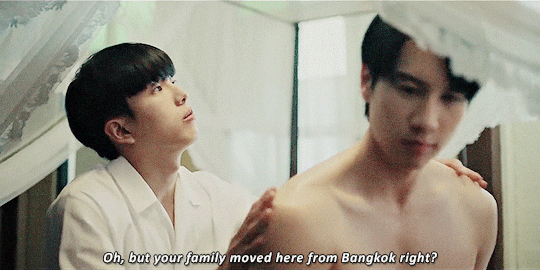
"The province?" Khun–Yai turns his head.
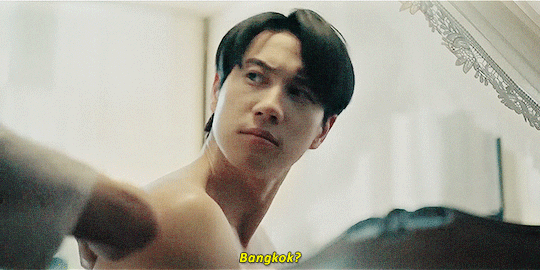
I slap my mouth once in aggravation. Bangkok in this era is probably referred to as the Bangkok Region and the Capital. "Sorry. It was a mistake. What I mean is, did your family move from the Capital?"

Khun–Yai eyes me with mild suspicion but still answers, "Yes. My father owns plenty of lands in the Capital. My mother also has hundreds of lands in Thonburi and Nakhon Pathom. My grandfather transferred the ownership of the properties to her before she was born. Why do you ask?"




Oh…So, his parents have always been well–off. I take a deep breath and speak in all seriousness.
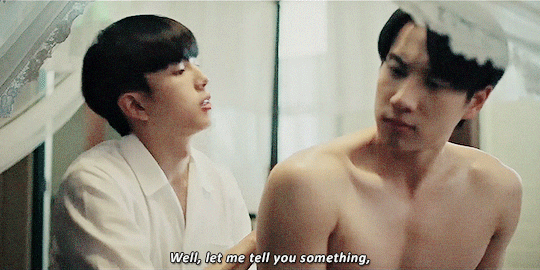
"Keep the lands safe. If not necessary, don't ever sell them. The prices of lands in Thonburi will be higher than gold in a short time. Capitalize the farms and paddy fields. If you don't gain much profit from renting them out, take care of them yourself. Hire workers and manage your own lands. As for the properties in the Capital, I hope you protect them with your life. Build residences or row houses for rent and collect the monthly rental fees. You will make more money than the salary of a civil servant."
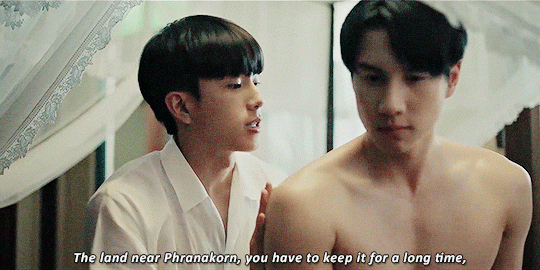

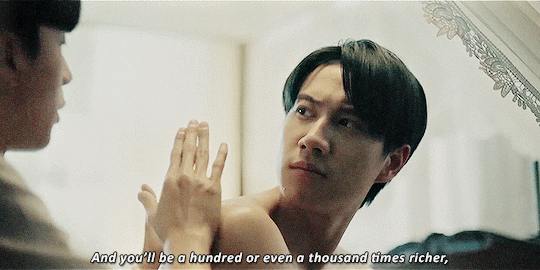
I have thought it out with ambition. No matter what, I will not let Khun–Yai become a nobleman turning poor. He must have a business with a stably monthly income, not only a salary from any title. The row houses and everything will be designed in advance by me. I will do it for free, not charging a single coin.
I am so engrossed in my plan that I don't notice Khun–Yai turning around and smiling.

"Do you know what you sound like?"

Seeing his weird, playful gaze, I ask right away, "What do I sound like?"

"You sound like a wife concerned about her husband's possessions, worried about how to gain profit from them," he stresses every word loud and clear.

"Khun–Yai!!!" I exclaim in shock, eyes widening.
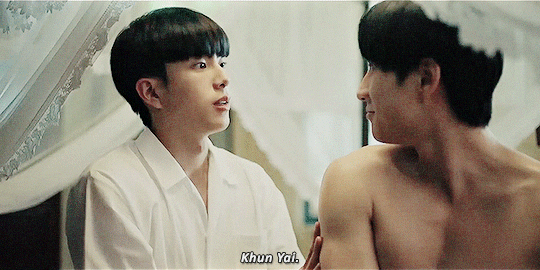
"Yeah…?"
Uggggggh.
"Don't speak in such a sweet voice." My head hurts as if I have a migraine, but a contented grin paints Khun–Yai's face. "Please don't say that. It's inappropriate. Besides, I'm a man. I can't be a wife."

Bonus excerpt:
"What is appropriate, then? Should I ask for your parents' blessings to have their son manage my possessions for the rest of my life?"
"Khun–Yai, I'm begging you. Don't joke like this. I'm going to have a heart attack." My heart is fragile. "Please turn around so I can scratch your back."
Seeing my serious expression, he relents and turns around, not forgetting to throw one last playfully flirtatious glance at me. I inhale and claw his back in annoyance.
"Ohh…Poh–Jom, if you scratch that harshly, my back will break," Khun–Yai groans.
Note: Before the quoted excerpt, there's also an extensive part where Jom pondered on the consequences of WW2 and its effects on Thailand's civil servants or high-rank authorities and how he could helped Khun Yai. You can read the full novel here.
i just really like that although series!jom is a bit more clueless and deer-in-the-headlights than novel!jom, the series is still very careful with their adaptation and brought this scene to life where jom uses his 21th century knowledge to help take care of khun yai (ALSO MY BABY). like i just find this entire yaijom scene (that was cut from the TV version, outrageous) so damn cute and it's been months after the show has ended but my mind is still lingering in this scene.

#i feel you linger in the air#claire opens her goddamn mouth#ifylita#nonkul chanon#bright rapheephong
35 notes
·
View notes
Text
Dubai cultivates an ultra-modern image of dazzling architecture and effortless wealth. Yet its deserts conceal forgotten cities and a hidden history which reveal how its early inhabitants adapted and overcame dramatic past climate change. There is no question that Dubai is the ultimate 21st century city. It boasts the tallest building in the world, attracts thirteen million visitors per year, and its airport recently claimed the crown of busiest in the world, by number of international passengers. So it’s understandable that archaeology and antiquities are not things that most people associate with Dubai and the United Arab Emirates. Yet this desert kingdom has a surprisingly rich history.
32 notes
·
View notes
Note
im looking forward to studying Modern Greek language and culture at university, and simply love your blog. i have fallen in love with this mysterious beauty! which parts of Greek culture, whether it be literature, art, history, schools of thought, anything at all, would you recommend me to look at in further depth? something less talked about, or more niche perhaps? much love x
Ohhh wishing you the best in your future studies! Hoping you will have a great time!
Some recs of things I personally enjoy from the Modern Greek culture, they are subjective, I have mentioned most before, so I am technically playing the broken record again!
Entechno, Rembetiko and classic Laiko music genres. Check the composers Mikis Theodorakis, Manos Hatzidakis, Markos Vamvakaris, Vassilis Tsitsanis and Stavros Xarhakos as a start. But I doubt you won’t learn about them through your studies anyway.
Domenikos Theotokopoulos (El Greco) is my favourite artist but a lot of modern(er) Greek art is very interesting actually
Alexandros Papadiamantis, Nikos Kazantzakis in literature
Erotokritos, both the poetry and the music and all its folk impact
Odysseus Elytis, Giannis Ritsos, Constantine Cavafy and Nikos Kavvadias poetry
I can’t not say the Greek Revolution but I doubt you can escape it in your studies anyway. Also the Axis Occupation Resistance, the Pontic Greek genocide and the population exchange with Turkey. But you will learn about all this, I believe. Check also about the civil war, which I am not sure they will teach you about at length. And the military junta.
Ioannis Kapodistrias and Eleftherios Venizelos as political profile studies. Check out those of Konstantinos Karamanlis and Andreas Papandreou as well if you are interested in politics, not because they were anywhere near as great as the former two but to explore the unbelievable impact they still have in Greek society.
Doesn’t matter if you are Christian or not, I really like Byzantine ecclesiastical music and architecture from an aesthetical standpoint so I recommend
Byzantine and Modern Greek folk fashion
Check out Georgios Gemistus Plethon, the Byzantine Greek Neoplatonic philosopher
Would I deviate if I just said Byzantine history? Oh well. It’s fascinating to explore the “relics” of Byzantium in the collective Modern Greek conscience.
Easter and Carnival traditions, their origins, historical evolution and practice today
Golden age cinema comedies (50s - 70s)
Watch the Island once you can understand Greek well (if you don’t already) or find English subtitles. It’s such a perfect and accurate window to Greek ethos in the first decades of the 20th century
Watch TV comedies of the 90s and 00s.
That might be harder to explore but I like the significance of Epitheórisi (Revue) as a theatrical genre in Greece. In general, check the tradition and huge presence of satire and satire comedians in Modern Greek society. Political correctness has made satire shrink drastically but I think it has an interesting history throughout the 20th century and first years of the 21st.
If you are interested in a school of thought, check out the work of the philosopher Cornelius Castoriadis (1922-1997)
If you don’t speak Greek yet, some of the recs are more niche than others and you will probably have to wait to be somewhat fluent in Greek before you can explore them properly. But music, art, philosophy… you can start with these. As for the history, you can also start, but make sure to also read Greek historiography once you know Greek better because… well.
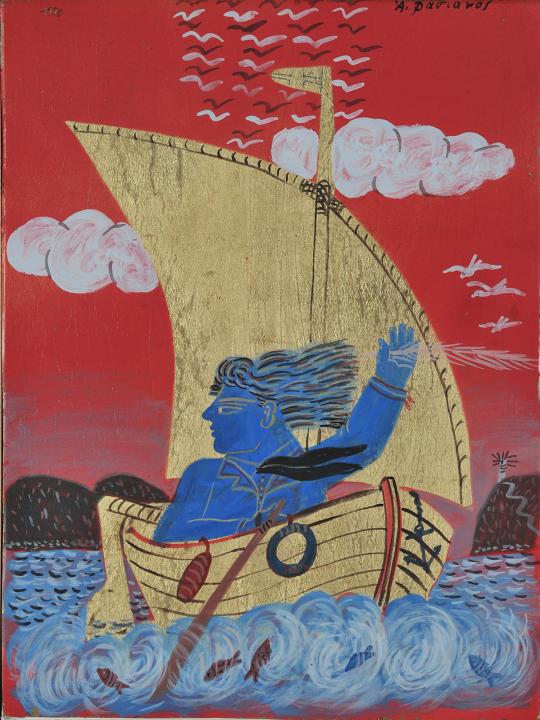
77 notes
·
View notes
Text
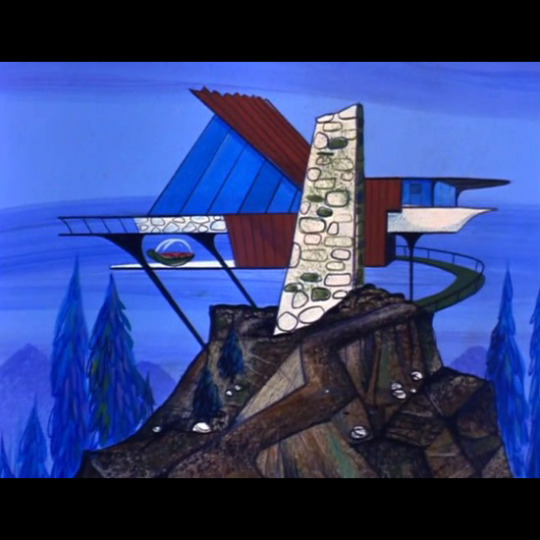
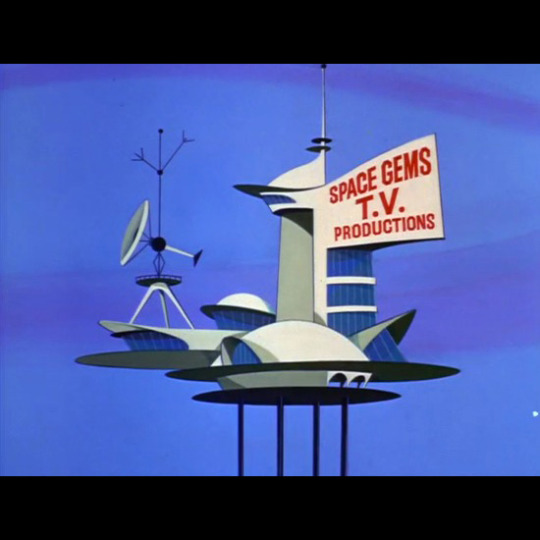
Mid-21st Century Modern: That Jetsons Architecture
https://www.smithsonianmag.com/history/mid-21st-century-modern-that-jetsons-architecture-2494820/
20 notes
·
View notes
Text
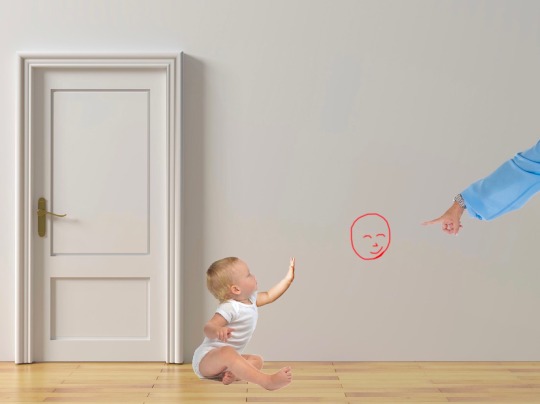


Child Artist Prodigy.
#modern and 21 century art and photography#modern and 21st century architecture#child artist prodigy
5 notes
·
View notes
Text
one thing about Hardison in Leverage is, you can't convince me this man would be using Microsoft Windows Fucking 7 as his daily driver operating system:

all the real-life hackers, infosec people, and computer enthusiasts I know are running Linux. the only computer folks I know running Windows are establishment SWE types or those who do IT for Windows-centric organizations. Hardison is neither of those archetypes, and he should care enough about defensive privacy-mindedness to not let Microsoft telemetrize his shit. plus Linux is just... easier to hack from. and it has severe nerd cred, even more so in 2008-2013 when the show was made.
honestly with what we see of Hardison, i headcanon him as someone who either
runs Arch, won't stop letting you know the extent to which he runs Arch, switches desktop environments every two weeks (which means that nobody but him can keep up with his constantly-changing keybindings), types in Dvorak
runs something completely wacky like resurrected Plan 9, wrote a modern browser for it in a weekend, claims it's the "OS of the future" despite being one of five people currently using it, won't shut up about "distributed computing" and "new architecture for the 21st century" on programming forums
built the world's first big quantum computer (this is how he effortlessly hacks into securely encrypted systems!) and wrote his own OS for it. every time they abandon their HQ in a hurry, he has to build another one. he sinks 90% of his income into this project, but it's worth it because it ups his effectiveness as a hacker by like 100x
and to go along with that headcanon, I think they aren't showing us the OS that he's really using because it would "be too confusing" or "burn out our eyes" or something. like a mixture of "actually they weren't speaking English in Lord of the Rings, Tolkien translated it so we could understand" and "the angel does not appear to you in its true form because you would be struck down by its sublime beauty"
basically my ideal show is Leverage but the hacking and computer stuff is more accurate. with a little leeway for badassery of course! but please god not Windows... don't do my man Hardison like this please
17 notes
·
View notes
Photo
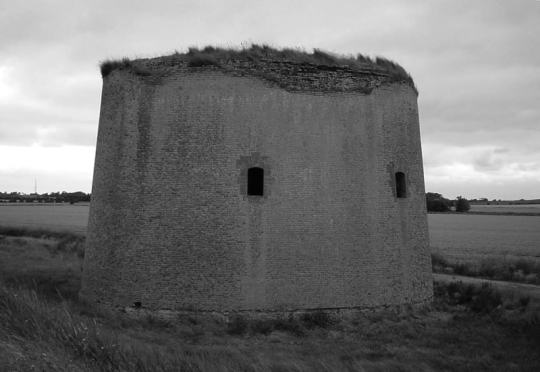
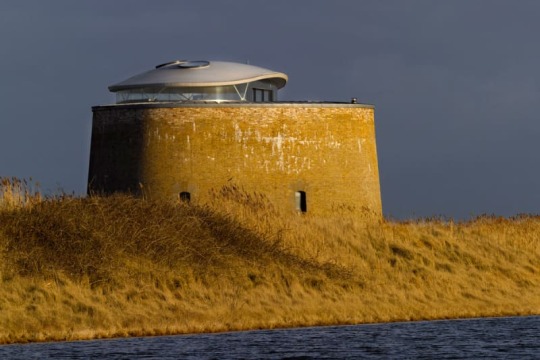
The architectural company Piercy & Company turned the dilapidated 1802 Martello Tower, into a family home in Suffolk - United Kingdom.
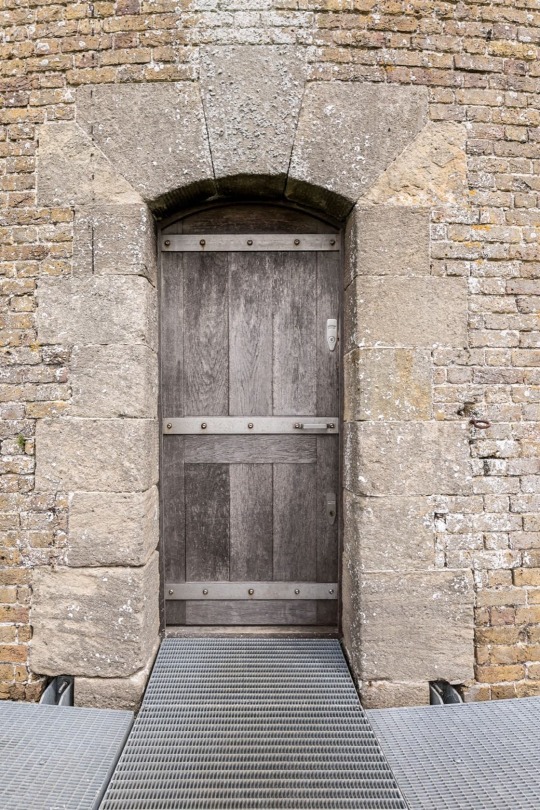
The entrance door looks original.
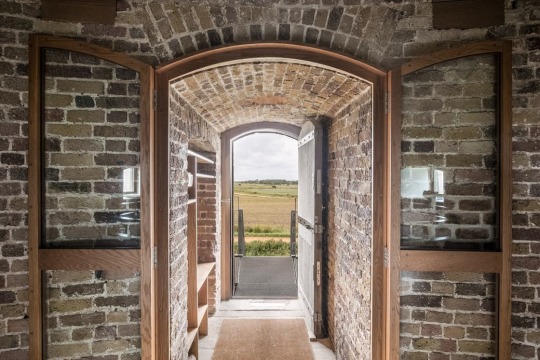
And, it has a foyer.
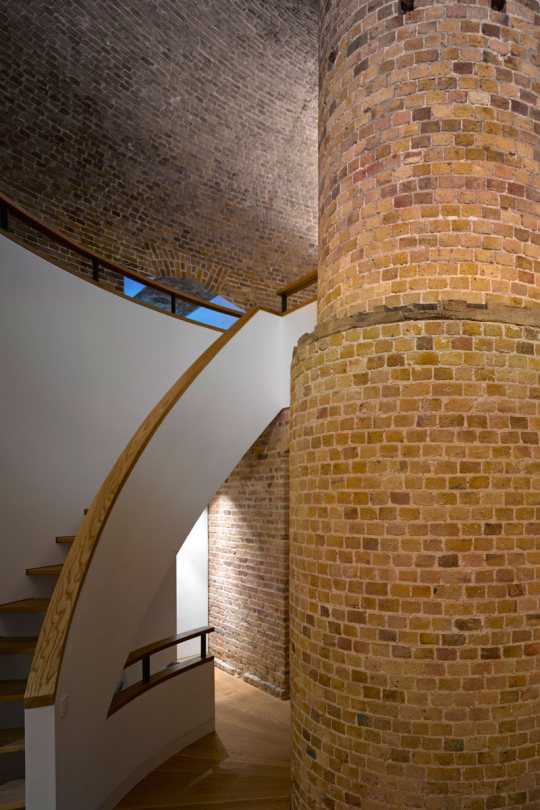
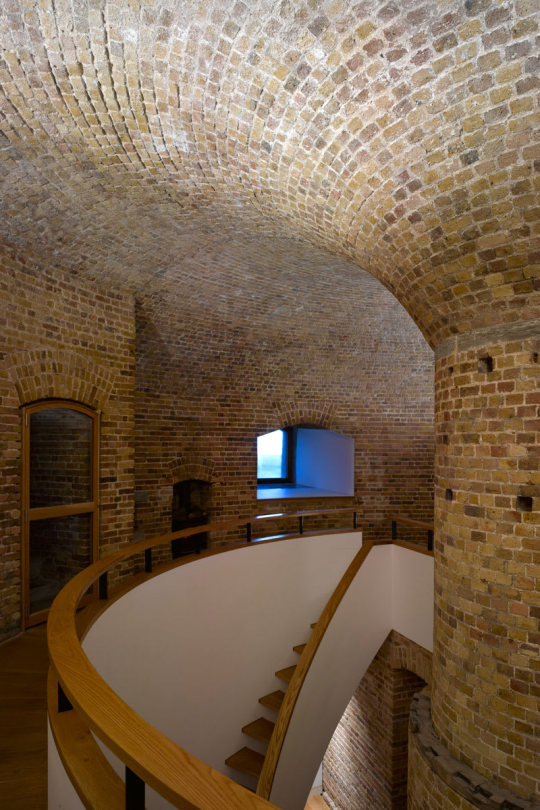
Converting a Napoleonic era defense tower built in 1808 into a 21st Century private residence was a demanding project.
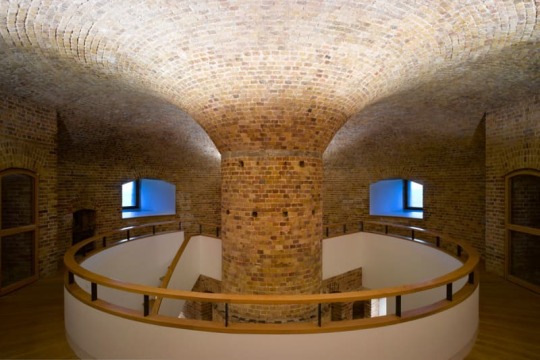
The tower was comprised of 750,000 bricks and the quality of the construction set the standard for the design.
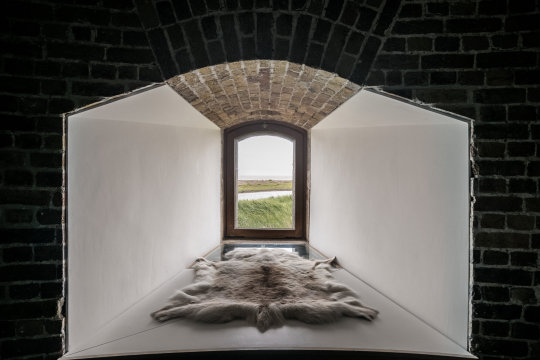
There are nooks like this along the way up, which I guess the residents can relax in- it looks like it has a glass window in the floor.
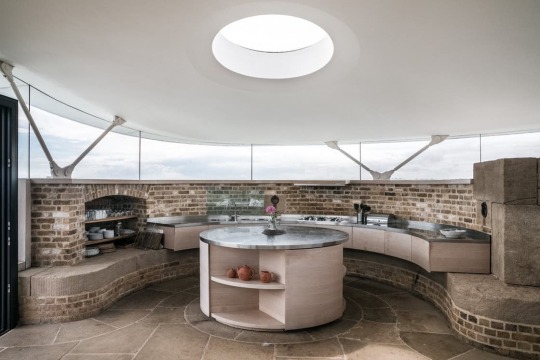

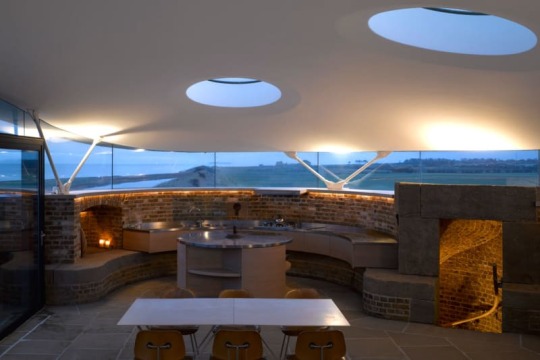
The new roof is a 3D curved lightweight structure, constructed of steel and laminated plywood. Look at the sleek kitchen.
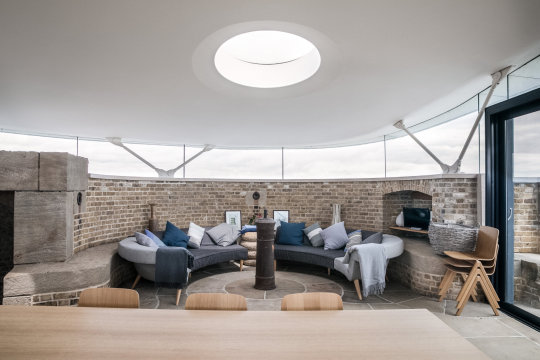
The living room is very modern.
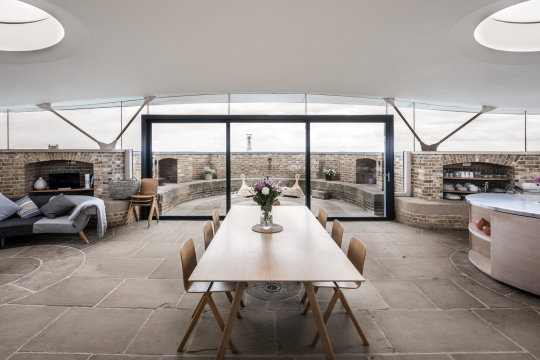
The main part of the building houses the stairs to get up to the living spaces. It has nice views, gets great natural light, and has a big outdoor area. The space for a dining table is huge.

Outdoor area.
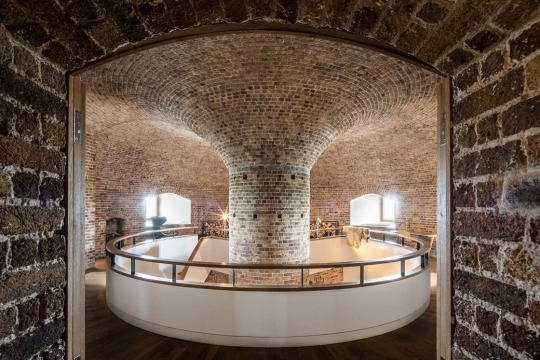
Can you imagine living here?
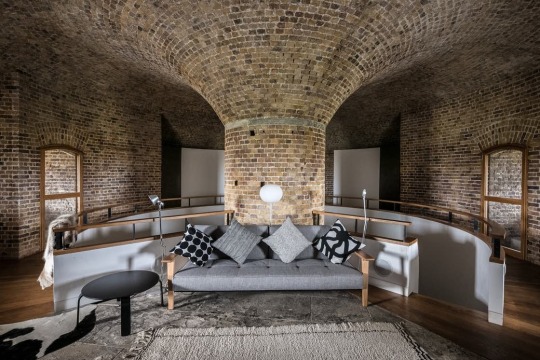
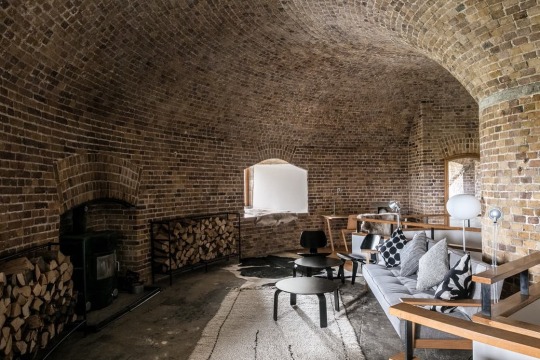

A family room area is so cozy when the fire and lights are lit.

Bedrooms and baths leading off the tower.


A bedroom and bath- extremely modern design.
https://www.dwell.com/article/martello-tower-y-billings-jackson-design-piercy-company-569a4ee7/6556618145588948992
355 notes
·
View notes
Text
re. that culturaltutor thread on minimalism and beauty
(moving my commentary to a separate post to spare the Tumblr user who reposted the thread, who’s a totally normal antiracist/anti-white-supremacy SFF person -- you can find the Twitter thread in question reposted on their blog but I don’t fault them at all for not spotting this)

This guy is fully being weird about it in a way I unfortunately am not surprised by from a dude with an all-white Classical statue twitter av and the handle “The Cultural Tutor”. I’m very much a maximalist and my idea of a calm space is one that feels cozy and personal rather than one that feels sleek and tranquil, but each of these instances of “character” in design is the product of decades or centuries of advancements in design thought, materials, architectural method, and urban planning. I can point to a dozen instances of thoughtful, sensitive architectural detailing in 21st century architecture in my own city -- bike racks with individual emblems symbolizing historic neighborhoods, sidewalk repairs imprinted with brief poems on each newly-poured slab, elaborate bike bridge fences celebrating local Native cultures and artists, a wall of green plant life in the middle of a skyscraper -- and those are all the product of conscious choices that say something. They, in fact, make you feel something, despite being decidedly minimalist by this dude’s standards and emphatically modern. They would not have been seen in my city in the 1880s or the 1920s and I’m fine with that. There is sensitive, meaningful detail and grace in modern design, and it is safe to say this person is not looking for it.
Piling every example of any disparate preceding period’s artistic and design output (or any of the ones that catch the OP’s eye, wherein you might start to notice some patterns: a 13th century English cathedral, a gold-painted “Victorian” doorbell of who knows what provenance, an English civil architect and engineer’s fancy bench circa the 1870s, an iron telephone kiosk designed by hey another English architect circa the 1920s...) is absurd as grouping all the causes for what we’re perceiving as unpleasant sterility (capitalism, hostile design, passing stylistic fads, changing perceptions of what looks “prestigious” and “expensive”, the most recent several decades in aesthetic thought, lazy landlords giving my entire 1910s-era apartment a shitty paintjob because who needs charming wood detailing. and many more) under the heading of “minimalism, so as not to offend anyone, effacing our (whose?) cultural identity”. Stroking a boner for classicism and the general concept of the past is not the same as insightful commentary on design.
To say that all “minimalist” (read: post-1900? post-1950? predominantly painted white?) design is “soulless” or “has nothing to say” or lacks charm or character rankles me, at the exact moment as Twitter is reckoning with again, statue-avatar trad weirdos making this same argument about degener-- oh, sorry, “modern” art, or why Impressionist art has no meaning and no beauty and its artistic proponents were clearly all draft-dodgers who shirked their patriotic duty in World War One. (No evidence and no chronology on that one, just vibes.) This whole thing is one long shrill dogwhistle about modernity and tradition (guess which political movement is obsessed with those particular themes right now? they are actively recruiting!) and seeing it get re-circulated on Tumblr with a quasi-leftist hat on in the tags about how it’s capitalism that made modernity ugly doesn’t make me happy.

EDIT: Another user has also noted that this dude’s Twitter follows are decidedly sketchy.
https://eelfuneral.tumblr.com/post/688437928734736384/i-hate-boring-homogenous-architecture-as-much-as

Best case scenario, this dude’s a trad and comfortable rubbing shoulders with more overtly-racist/white supremacist/neo-Nazi trads, worst case scenario... yeah.
194 notes
·
View notes
Text
Midsummer
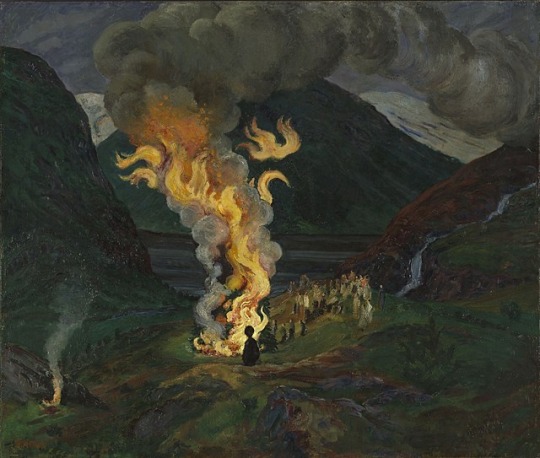
Celebrated around June 24th, but with the event happening on June 21st, Midsummer is the sister celebration of Midwinter/Yule/Christmas.
Bonfires were lit to ward of evil spirits, now that days will be shorter every evening after this one, giving them more dark hours to taunt the living. Various beliefs exist that plants or herbs would have magical powers during this night.
Although Christmas has very probable Celtic origins, there’s consensus amongst historians that Midsummer is Germanic of origin. St Eligius (St. Elooi) forbids the late Merovingians, early Carolingians in modern day Flanders to celebrate midsummer, as it is not accepted in their new Christian religion. “Litha” or midsummer, is the Germanic origin of the modern Dutch word for spring “lente”
Similar to Midwinter being a commemoration of Christ’s birth, Midsummer was attested to the birth of St John the Baptist to counteract the pagan celebrations (hence the day differences in both Hollidays 21-24).
The celebration is still popular in Northern Europe, while heavy Christian oppression in the 16th century dwindled the amount of people who celebrate in Western Europe. Recent revivals of Paganism or Ásatrú are bringing a reinterpretation of this celebration back.
Nikolai Astrup, “Bonfire celebrating Midsummer Night” paper, 89x105 cm, National Museum of Art, Architecture and Design, Oslo, 1926.
#frankish#merovingian#viking archaeology#archaeology#carolingian#charlemagne#field archaeology#viking mythology#merovingian archaeology#germanic mythology#paganism#witchythings#pagan tumblr#pagan wicca#witchblr#asatru#Wicca#bonfire#Christmas#midsummer#a midsummer night's dream#norse mythology#anglo saxon#field archaeologist#frisian#odin#viking#vikings#germanic#germanic folklore
21 notes
·
View notes